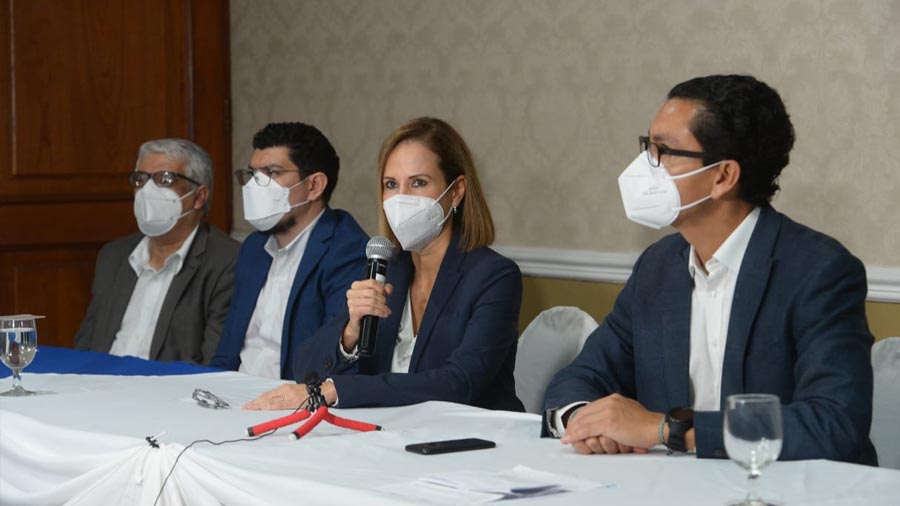Madrid, 14 (European press)
Scientists have documented for the first time how thawing permafrost, submerged underwater at the edge of the Arctic Ocean, affects the sea floor.
Several peer-reviewed studies show that thawing permafrost creates unstable ground that negatively impacts critical infrastructure in the Arctic such as roads, railroads, buildings and airports. Repairing this infrastructure is expensive, and the impacts and costs are expected to continue to rise.
Using advanced underwater mapping technology, researchers at the Monterey Bay Aquarium Research Institute (MBARI) and their collaborators have revealed that dramatic changes are occurring on the sea floor as a result of melting permafrost. Deep sewers have formed in some areas, some larger than the six-story city block. In other areas, ice-filled hills called bingo rose from the sea floor. These results are presented in the Proceedings of the National Academy of Sciences.
“We know there are big changes happening across the Arctic landscape, but this is the first time we’ve been able to use technology to see that changes are happening outside as well,” said Charlie Ball, a geoscientist at MBARI and one of the lead authors. studying. This groundbreaking research has revealed how subsea permafrost melt can be detected, and tracked once baselines are established.”
While the degradation of terrestrial permafrost in the Arctic is partly attributable to increases in average annual temperature caused by human-caused climate change, the changes the research team documented in the seafloor associated with underwater permafrost stem from older and slower associated climate changes. To get us out of the last ice age. Similar changes appear to have occurred along the edge of the sea in ancient permafrost of thousands of years.
“There is not a lot of long-term data on seafloor temperature in this region, but what we have does show a warming trend. Powell explains changes in seafloor topography due to heat carried by slow-moving groundwater systems.”
“This research has been made possible by international cooperation over the past decade, which has given access to modern marine research platforms, such as MBARI’s autonomous robotics technology and icebreakers operated by the Canadian Coast Guard and the Korea Research Institute.” Scott notes. Dallimore, a research scientist with the Geological Survey of Canada, Natural Resources Canada, who led the study with Paull.
“This research is greatly appreciated by the Government of Canada and the Inuvialuit people who live along the Beaufort Sea coast, as the complex processes described have implications for geological hazard assessment, the creation of a unique marine habitat, and our understanding of biogeochemical processes.”
The Canadian Beaufort Sea, a remote region of the Arctic, has only recently been inaccessible to scientists as climate change is leading to the retreat of sea ice.
Since 2003, MBARI has been part of an international collaboration to study the seafloor of the Canadian Beaufort Sea with the Geological Survey of Canada, the Canadian Fisheries and Ocean Administration, and since 2013, with the Korea Polar Research Institute.
MBARI used autonomous underwater vehicles (AUVs) and ship-based sonar to map the seafloor bathymetry to a square meter grid resolution, roughly the size of a tabletop.
Powell and his team of researchers will return to the North Pole this summer aboard the R/V Araon, the Korean icebreaker. This trip with MBARI’s Canadian and Korean collaborators—as well as the US Naval Research Laboratory—will help improve our understanding of subsea permafrost decomposition.
Two of MBARI’s AUVs will map the sea floor in great detail, and MBARI’s MiniROV – a portable remotely operated vehicle – will allow further exploration and sampling to complement the map studies.

:quality(70)/cloudfront-us-east-1.images.arcpublishing.com/metroworldnews/CMBRQM7ABZEARKNMU4VK64IB2A.jpg)
:quality(85)//cloudfront-us-east-1.images.arcpublishing.com/infobae/V4RBDOAALJBVVDRESQISNMRRCA.jpg)
:quality(85)/cloudfront-us-east-1.images.arcpublishing.com/infobae/TGEJ4HMUINAGDNNVCRDMCM2HUQ.jpg)

